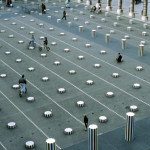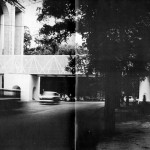simbolo
[omissis] | davide tommaso ferrando
Architectural symbolism is no longer relevant.
The impact of accelerating change on the physical form of the city is radical. Institutions have shorter and shorter lives – railway stations are converted into museums, power plants into art galleries, churches into night-clubs, warehouses into homes – and it is now commonplace to ancitipate that a building will outlive the purpose for which it is built in a matter of a few years.
Modern life can no longer be defined in the long term and consequently cannot be contained within a static order of symbolic buildings and spaces. The classical order of architectural symbolism is no longer relevant. The viewer is no longer able to read the function of buildings: the church, the town hall, the palace, the market, the factory. Buildings no longer symbolise a static hierarchical order; instead, they have become flexible containers for a use by a dynamic society.
However, it is the arrangement of buildings in space – the network of the city as a whole – that has come to be the dominant reflection of modern urban society.
RICHARD ROGERS, Cities for a Small Planet, Westiew Press, Boulder 1998, pp. 163-64.
Questo sito usa Akismet per ridurre lo spam. Scopri come i tuoi dati vengono elaborati.








Lascia un commento